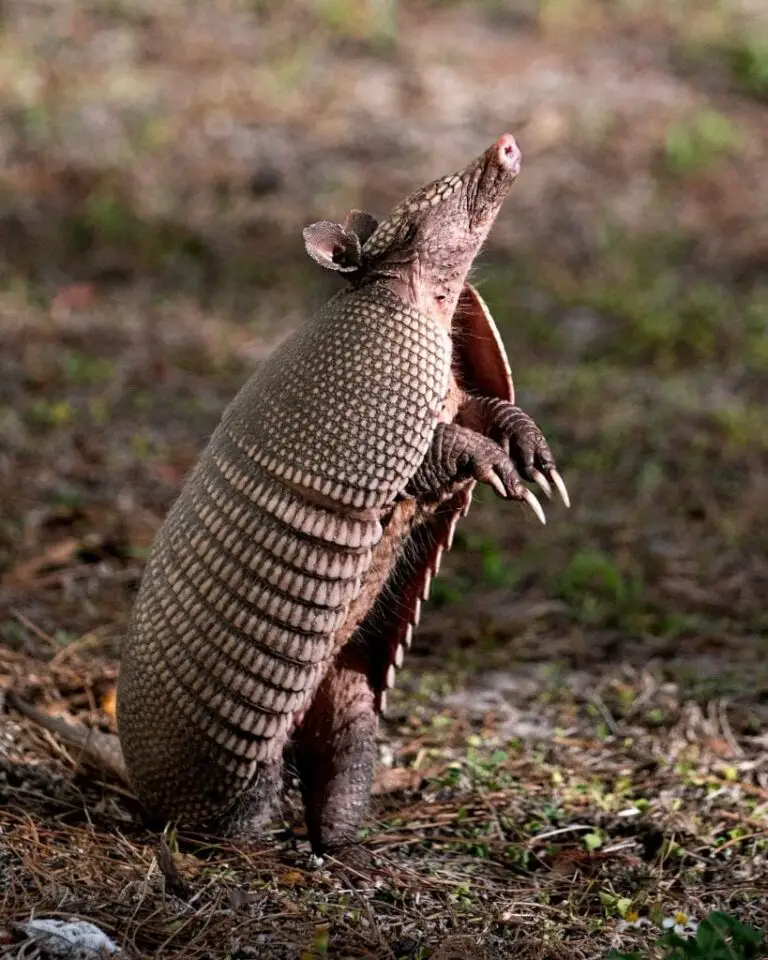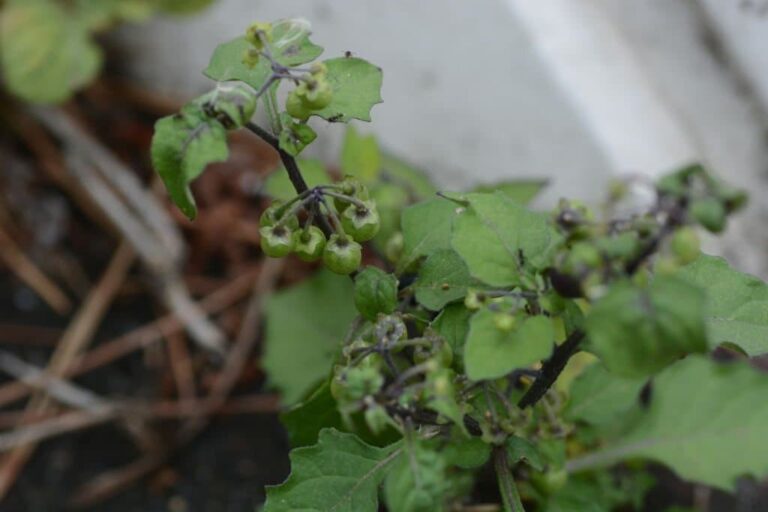32 Stunning Flowers That Look Like Peonies (With Pictures)
If you’re captivated by the majestic beauty of peonies, but concerned about the time and effort required to maintain them, don’t worry! There are numerous flowers that can offer a similar visual appeal without the fuss. In this post, we’ll explore 32 stunning blooms that share a resemblance with peonies, providing valuable information on how to care for these plants so you can enjoy their loveliness for years to come.
This diverse array of flowers includes Althea Shrub (Rose of Sharon), Ambassador Allium, American beautyberry, Anemones, Asters, Begonias, Blanket Flower, Camellia Japonica, Candy Oh Rose, Carnations, Chocolate Cosmos, Chrysanthemum, Common Lilac, Contorted Filbert, Dahlias, Double Early Tulips, Drooping Coneflower, Eden Rose, Flamingo Willow, Hardy Hibiscus, Hydrangeas, Japanese Rose, Julia Child Rose, Lisianthus, Marigolds, May Rose, Mock Orange, Peony Rose, Persian Buttercup, Ranunculus Rhone Pink, Viburnum, and Zinnias.
Whether you’re looking for a low-maintenance option or seeking to add some drama to your garden, this list has something for everyone.
Althea Shrub (Rose of Sharon).
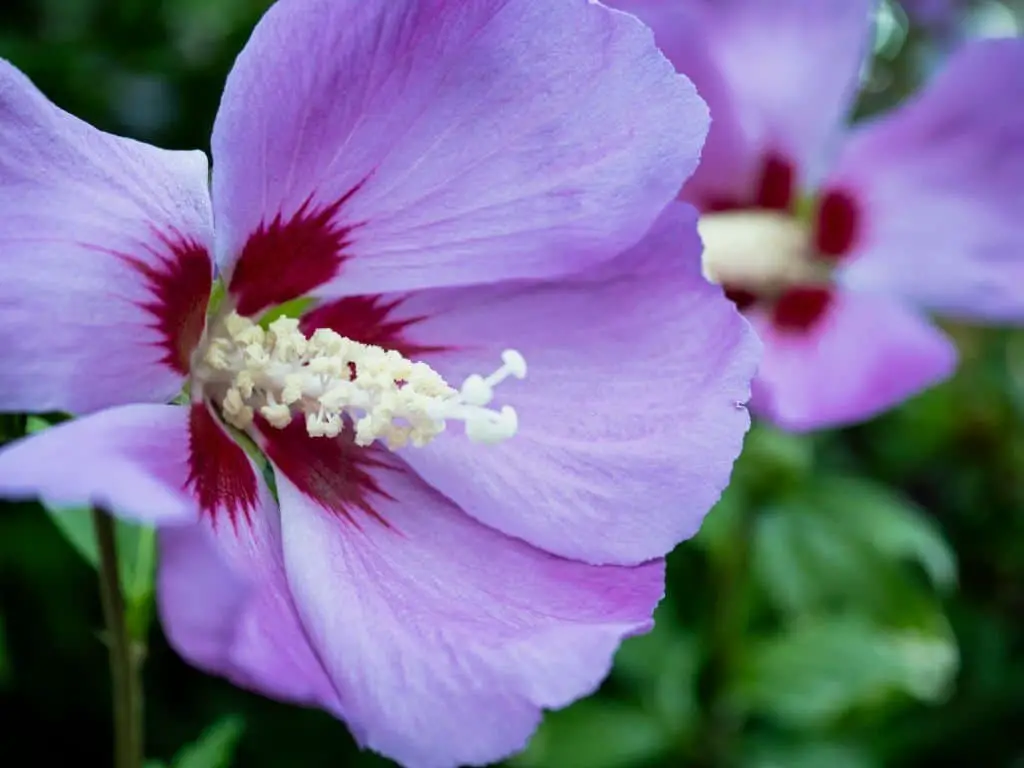
The Althea Shrub, a cousin of the hibiscus, boasts stunning flowers that resemble peonies in appearance. These cup-shaped blooms come in a range of colors – white, pink, and purple – bringing vibrancy to any garden. For those seeking a pop of color, this shrub is an excellent option. As a deciduous shrub, the Althea sheds its leaves annually, preparing for the colder months ahead. While it thrives in full sun, it can also tolerate partial shade.
A low-maintenance choice, this shrub adapts well to drought conditions once established, making it a practical addition to any outdoor space.
Ambassador Allium (Allium ‘Ambassador’).
The Ambassador Allium, a cultivar of Allium cepa, originated in the Netherlands and is prized for its striking, large-scale blooms. This ornamental onion variety is grown for its showy flowers, which are supported by stems that can reach impressive heights of up to four feet. Typically started from bulbs, the plants will bloom in the spring or summer, providing a vibrant display of color in any garden.
Its long-lasting cut flower arrangement, which can remain fresh for up to two weeks in a vase, makes it an excellent choice for floral arrangements and adding a pop of color to any room.
American beautyberry (Callicarpa americana).
In its native habitat in the southeastern United States, the American beautyberry thrives in woodlands, edging swamps and marshes. As a deciduous shrub, it typically reaches heights of around six feet, boasting dark green leaves and clusters of small, white summer blooms. The fruit that follows is a stunning purple hue, ripening in autumn. Beyond its visual appeal, the American beautyberry plays a vital role in supporting local wildlife.
Its berries serve as a crucial food source for various birds and animals, while the shrub itself provides shelter and nesting sites for feathered friends. Not only is it aesthetically pleasing, but the beautyberry is also remarkably easy to cultivate. Its adaptability to diverse soil types and tolerance of full sun to partial shade make it an ideal choice for those seeking a low-maintenance yet beneficial addition to their landscape.
Anemones.
Elegance and beauty are timeless associations with anemones, a type of flower renowned for its dainty appearance and vibrant color palette. Spanning a range of hues from pure white to soft pink and majestic purple, these flowers exude a sense of anticipation, making them a popular choice for gifts preceding special occasions.
Their intricate petals and stunning colors have also made anemones a sought-after feature in weddings and other formal events, where their refined beauty can be fully appreciated.
Asters (Symphyotrichum).
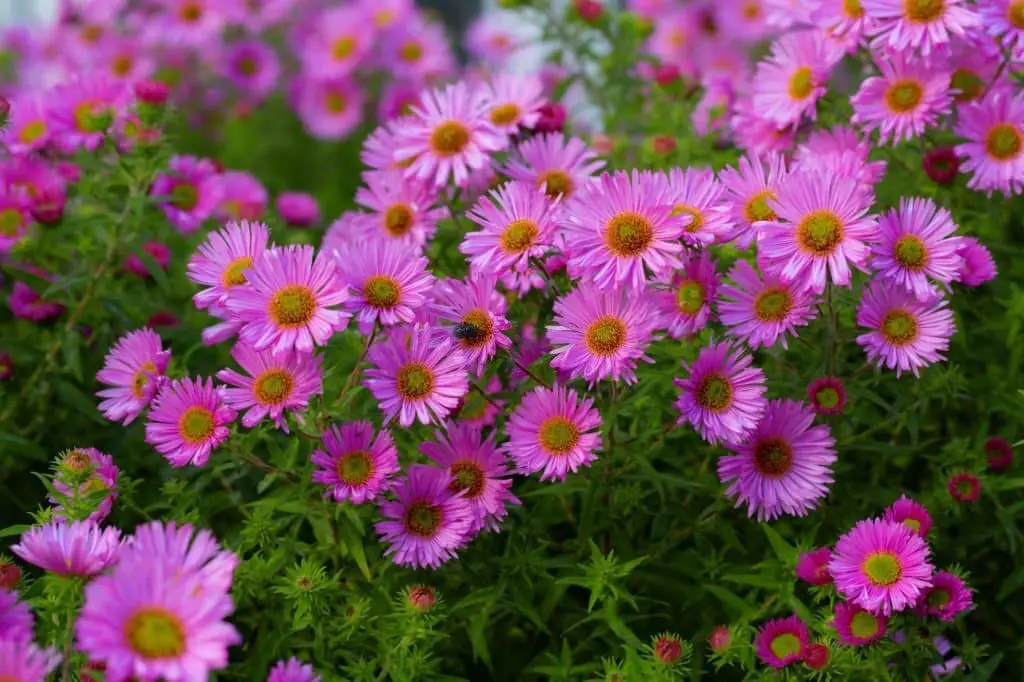
Asters belong to the Asteraceae family, comprising around 180 species that span across North America, Europe, Asia, and Australia. Derived from the Latin word for ‘star’, the name ‘aster’ is a nod to the distinctive shape of their flower heads. These herbaceous perennials typically grow between 30-150 cm tall, with leaves that are primarily alternate, simple, and petiolate, except in a few instances where they exhibit opposite leaf arrangements.
The flowers themselves are borne on solitary or corymbose racemes, featuring ray florets surrounding a central disc of tubular florets. Asters display an array of vibrant colors, including yellow, pink, purple, blue, white, and orange, making them a visually striking addition to any environment.
Begonias.
Begonias are a diverse group of flowering plants that belong to the genus Begonia and the family Begoniaceae. With over 1000 species and countless hybrids and cultivars, this genus is incredibly vast. Native to moist subtropical and tropical climates, many begonia species have adapted to thrive in indoor environments as popular ornamental houseplants in temperate regions.
The vibrant flowers of begonias are a true marvel, boasting an array of colors including white, pink, red, orange, and yellow. Typically, the blooms are borne singly or in clusters, featuring four delicate petals. In addition to their stunning flowers, begonia plants boast large and lobed leaves that exhibit an astonishing range of shapes and textures.
Blanket Flower (Gaillardia).
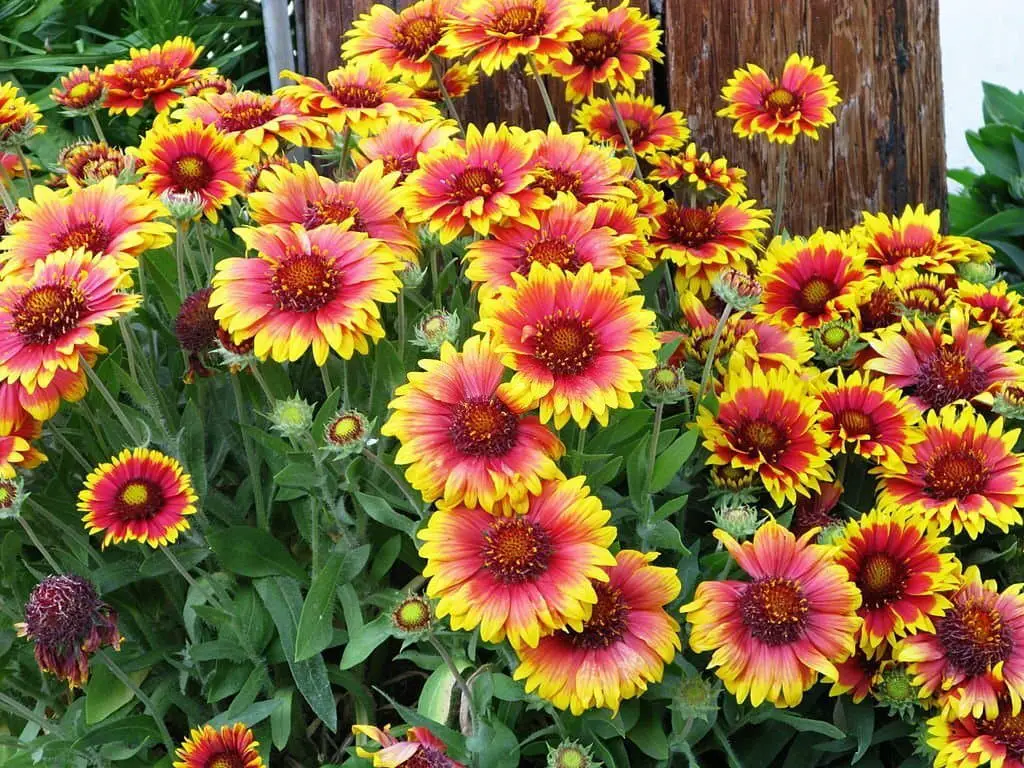
Boasting a striking resemblance to peonies, this stunning wildflower is a native North American beauty. Its fringed petals radiate vibrant colors, making it a standout in any garden setting. With the ability to thrive in various soil types and full sun exposure, blanket flowers are incredibly adaptable. Beyond their aesthetic appeal, these blooms also offer ecological benefits. They serve as a magnet for pollinators like bees, butterflies, and birds, adding to the richness of your outdoor space.
As a result, they’re an excellent addition to cottage gardens, meadows, or any area where you want to attract wildlife. Their versatility makes them a great choice for gardeners looking to create a thriving ecosystem.
Camellia Japonica.
One can’t help but be charmed by the beauty of the Camellia Japonica, affectionately known as the Japanese camellia. Native to southern Japan, this species of camellia has won hearts worldwide with its elegance. While it’s commonly cultivated as an ornamental plant in temperate climates, its allure transcends geographical boundaries, making it a timeless favorite among flower enthusiasts.
Candy Oh Rose (Rosa ‘Zlemartincipar’).
Martin Van Hecke’s Candy Oh Rose is a stunning hybrid tea rose that combines the best qualities of a classic Hybrid Tea. This Belgian-bred beauty boasts large, full blooms on long stems, complemented by glossy dark green foliage and impressive disease resistance. But what truly sets it apart is its breathtaking deep pink flowers, which emit a sweet fragrance that’s simply intoxicating.
As a repeat bloomer, Candy Oh Rose provides a prolonged display of beauty from early summer to fall, making it a must-have addition to any rose enthusiast’s garden.
Carnations.
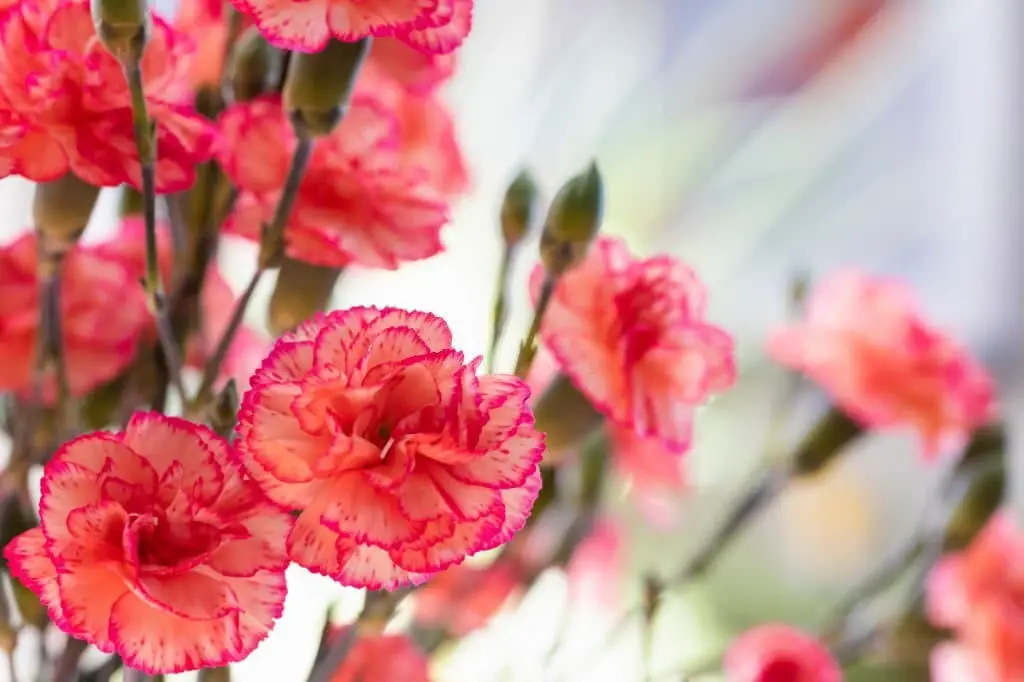
With over 300 million bouquets sold annually, carnations are one of the most sought-after flowers globally. Their vibrant hues and versatility have made them a staple in floral arrangements, wedding decor, and special occasion celebrations. Beyond their stunning visual appeal, carnations also boast an impressive range of colors, spanning from classic red to soft pink, radiant white, sunny yellow, and even subtle green tones.
This remarkable color palette has led many to appreciate carnations as more than just a pretty face – they’re a symbol of love, fascination, and distinction, making them a popular choice for expressing emotions and marking milestones.
As a member of the Dianthus family, which includes gardenias and pinks, carnations have deep roots in European and Asian cultures.
Their cultivation dates back centuries, with today’s widespread availability ensuring that these beautiful blooms can be enjoyed year-round.
Chocolate Cosmos (Cosmos atrosanguineus).
In the heart of Mexico, the Chocolate Cosmos thrives with its striking deep red or chocolate brown petals. Reaching a modest height of approximately 30 cm (12 in), this perennial plant bursts into bloom from mid-summer to early fall. What’s more, it’s a low-maintenance addition to any garden, as it will return year after year. Its adaptability allows it to flourish in full sun or partial shade, making it an ideal choice for those with varying environmental conditions.
Chrysanthemum.
The genus Chrysanthemum comprises approximately 30 species of perennials, with their origins rooted in Asia and northeastern Europe. The name ‘chrysanthemum’ is a direct translation from the Greek words chrysos (gold) and anthemon (flower), reflecting the flower’s golden hues. Initially introduced to Japan in the early 18th century, the Japanese have been nurturing this genus ever since, valuing its aesthetic appeal as well as its medicinal properties.
The flowers are not only a sight to behold but also utilized in traditional tea blends and medicine. With numerous varieties and a kaleidoscope of colors including white, yellow, pink, red, and purple, chrysanthemums offer an array of options for enthusiasts.
Common Lilac (Syringa vulgaris).
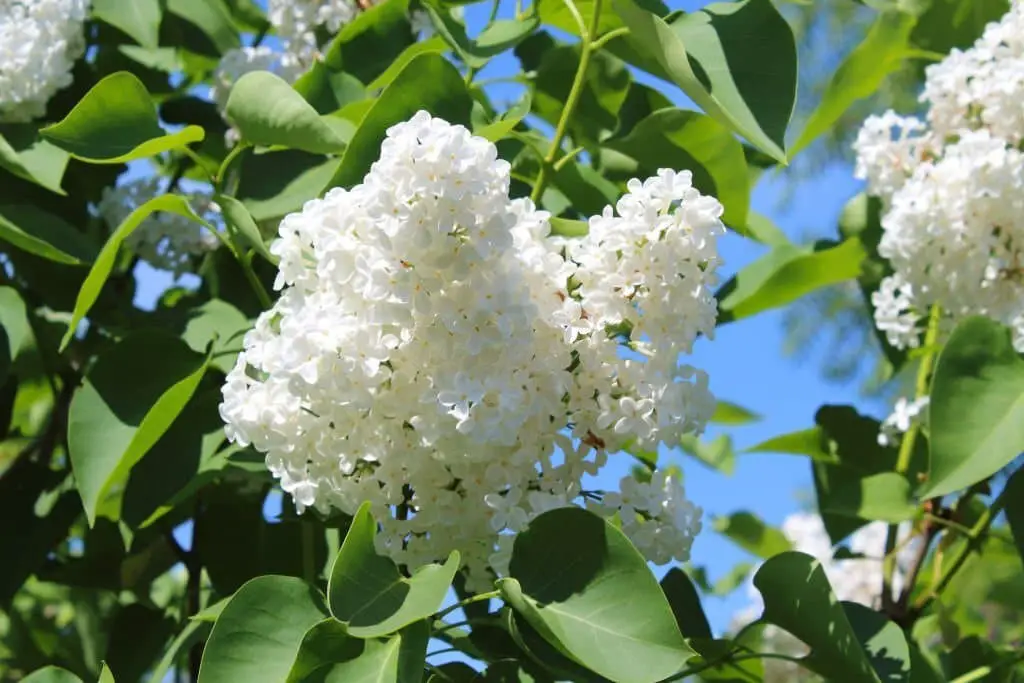
In North America, the Common Lilac is one of the most widely cultivated species. Its popularity stems from its low-maintenance requirements and impressive spring displays. The shrub’s flowers are particularly noteworthy, boasting a large size and showy appearance, accompanied by a sweet fragrance that is sure to delight anyone who catches a whiff.
As a deciduous variety, Common Lilac can grow quite substantial, so be sure to assess your yard’s space constraints before planting, ensuring the shrub has room to thrive.
Contorted Filbert (Corylus avellana ‘Contorta’).
With its unique, twisted branches covered in dark-colored leaves, the contorted filbert stands tall at around six feet high. Its small, brownish-red flowers, reminiscent of peonies, bloom in the spring and early summer, adding a touch of elegance to any garden. This ornamental shrub is native to Europe and Asia, where it’s often cultivated for its striking appearance. As an added bonus, its compact size makes it an ideal choice for smaller gardens or as a decorative accent in larger ones.
Dahlias.
From itsy-bitsy pom-poms to gargantuan blooms that rival dinner plates, dahlias come in a dazzling array of colors and sizes. What’s more, their unique beauty defies comparison – even their closest botanical cousin, the peony, can’t match their charm.
With roots tracing back to ancient Mexico, where they were first cultivated by the Aztecs, dahlias have traveled far and wide.
Spanish missionaries introduced them to Europe in the 1600s, and since then, they’ve been a beloved favorite among gardeners. In fact, dahlias hold a special place in Mexican culture as the national flower – and, interestingly enough, were declared the official flower of San Francisco back in 1926.
Double Early Tulips (Tulips ‘Abba’).
With their delicate, ruffled petals and deep pink hue with subtle undertones of purple, these ‘Abba’ tulips bear a striking resemblance to miniature peonies. This charming variety is particularly notable for its elegant appearance, making it an ideal addition to any spring garden seeking a touch of refinement. One of the earliest blooming tulips, ‘Abba’ typically begins to unfurl its beauty in the first flush of spring, often being one of the first flowers to burst into bloom.
Moreover, these blooms are known for their remarkable longevity, with some lasting up to two weeks, making them a wonderful choice for adding a pop of color and vibrancy to your garden.
Drooping Coneflower (Echinacea pallida).
While resembling peonies, these flowers actually belong to the daisy family, with slightly drooping petals and a cone-shaped center. Native to eastern United States prairies and open woodlands, they thrive from June to August, reaching heights of up to three feet. The vibrant pinkish-purple blooms attract an array of pollinators, including bees, butterflies, and birds. At the flower’s core lies a distinctive feature: a cone composed of black seeds surrounded by yellowish-green bracts.
Eden Rose.
The Eden Rose peony is the result of a unique breeding process that combines the best qualities of two different peony types. This stunning new variety boasts petals as soft as silk and a deep pink hue reminiscent of roses. Its breathtaking beauty makes it an ideal addition to any garden, bringing with it an air of sophistication and refinement.
For those who desire to grow their own Eden Rose, potted plants are available at local nurseries, while cut flower enthusiasts can order them online or through a florist.
Flamingo Willow.
The Flamingo Willow, native to Japan, Korea, and China, boasts arching branches that showcase its striking foliage. Its leaves are large and a deep green hue, while the flowers are small and feature a subtle pink undertone against a white backdrop. This ornamental shrub bursts into bloom during springtime, reaching heights of up to six feet tall. Its refined appearance makes it an excellent choice for those seeking to infuse their garden with sophistication.
With relatively low maintenance requirements and adaptability to varying climates, the Flamingo Willow is an attractive addition to any outdoor space.
Hardy Hibiscus.
In the world of botany, peonies stand out as a unique group of flowering plants that belong to the Paeoniaceae family. This family consists of only one genus, Paeonia, which is remarkable in its own right. Peonies are native to Asia, Europe, and Western North America, making them a fascinating example of how plant life has evolved across different regions.
As herbaceous perennials, peonies boast impressive features like large compound leaves and stunning flowers that can range from white to pink to red in color. Some species even produce beautiful yellow blooms. With their showy petals and sepals, peonies are sure to catch the eye of any nature enthusiast or gardener looking for inspiration.
Hydrangeas.
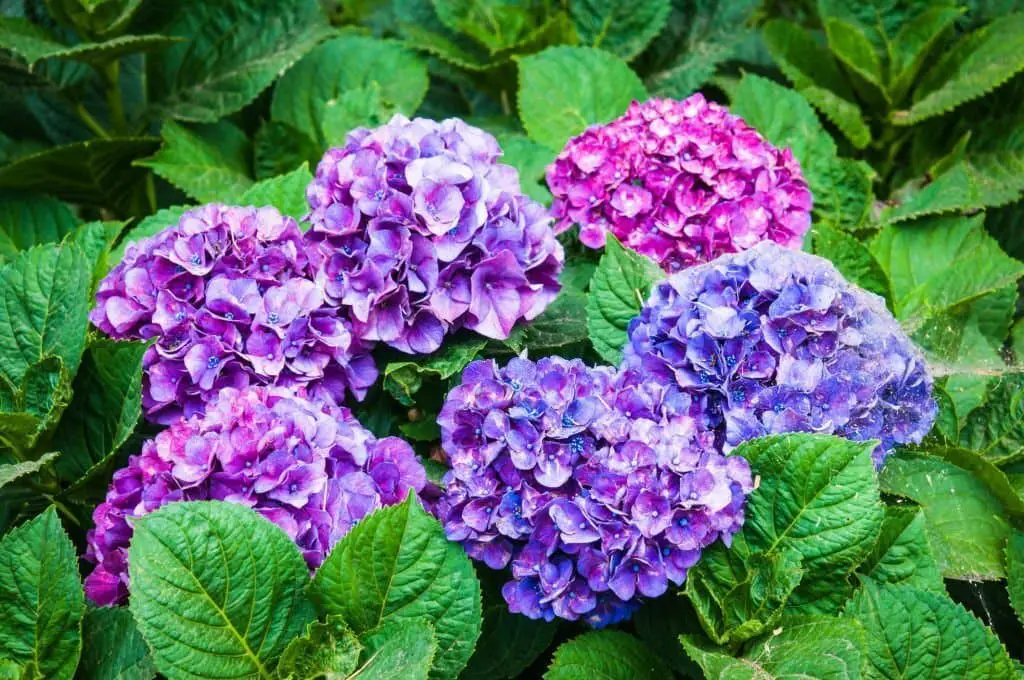
Hydrangeas have captured the hearts of many with their striking beauty. Originating from Asia and North America, these blooms have been a staple in gardens for over two centuries. One of their most notable characteristics is the impressive size and vibrant colors they display, ranging from pure whites to deep purples and every hue in between. Some species even boast the unique ability to shift their color based on the soil’s pH levels.
As a result, hydrangeas have become a go-to choice for garden enthusiasts and floral arrangements alike, offering an unparalleled touch of elegance and sophistication.
Japanese Rose.
With its striking reddish-purple blooms and lustrous green foliage, the Japanese rose (also known as Chinese or Oriental rose) is a deciduous shrub native to China and Japan. Its allure extends beyond its natural habitat, however, as it’s cultivated in gardens and parks worldwide. Beyond its ornamental appeal, the Japanese rose also finds application in the creation of perfumes and essential oils.
As a symbol of love and beauty, it’s often bestowed upon someone special, making it a popular choice for gifting.
Julia Child Rose.
Julia Child Roses boast floral blooms reminiscent of peonies, emitting a pleasant aroma. This low-maintenance plant is surprisingly resilient and simple to care for, making it an excellent choice for those seeking a rose that shares the same aesthetic appeal as peonies. For garden enthusiasts looking for a unique rose variety, the Julia Child Rose offers a charming combination of form and fragrance.
Lisianthus (Eustoma).
While its appearance may be reminiscent of peonies, the lisianthus flower stands out with its vibrant color palette, featuring a range of hues including white, pink, purple, and blue. Native to Mexico and South America, these flowers flourish in warm climates and are often sought after for their versatility in bouquets and floral arrangements.
Marigolds.
Marigold flowers, with their vibrant orange hue and potent aroma, are a popular choice for floral arrangements and sweet treats alike. Their unique appearance, reminiscent of miniature oranges, has captivated many, while their versatility in repelling garden pests has earned them a special place among gardening enthusiasts.
May Rose (Rosa X Centifolia).
For couples planning a spring or summer wedding, the May Rose offers a lovely alternative to traditional peonies. This stunning bloom, also known as the Provence Rose, boasts large, lush flowers with a sweet and subtle fragrance that adds a romantic charm to any arrangement. Its delicate petals make it an excellent choice for bouquets and centerpieces, bringing a touch of whimsy and elegance to the wedding decor.
Mock Orange (Philadelphus coronarius).
The Mock Orange shrub is characterized by its impressive height and spread, reaching up to six feet tall and wide. Its showy white flowers are trumpet-shaped and release a sweet fragrance reminiscent of real oranges, creating a delightful summer spectacle. Originating from Europe and Asia, this versatile plant has since spread globally, making it a popular choice for many gardens.
Peony Rose (Paeonia Lactifora Hybridis).
The peony-inspired bloom boasts a subtle yet alluring fragrance, a far cry from its showier counterpart. Its delicate petals unfurl in a rich pink hue, while the creamy white stamen at its center adds a touch of elegance. A brief but breathtaking display, this flower thrives in late spring and early summer, its fleeting beauty a true marvel.
Persian Buttercup.
Ranunculus Asiaticus, commonly known as the Persian Buttercup, hails from Turkey and is a member of the buttercup family. Its name originates from its striking resemblance to the peony flower. This vibrant bloom comes in a kaleidoscope of colors, including white, yellow, pink, and red, making it a coveted choice for floral arrangements and bouquets. Gardeners too have a soft spot for this lovely flower, which is renowned for its low-maintenance care.
It has a remarkable ability to thrive in most climates, making it an ideal addition to any garden or indoor space.
Ranunculus Rhone Pink.
If you adore the majestic appearance of peonies but find their fragile petals daunting, consider opting for the stunning Ranunculus flower instead. Native to Southern Europe and Asia, this buttercup family member boasts multiple layers of delicate petals that create a lush, romantic display. The Rhone variety stands out with its deep pink hue, making it an ideal choice for springtime bouquets.
With availability spanning from spring to early summer, Ranunculus flowers are the perfect addition to any floral arrangement during this enchanting season.
Viburnum.
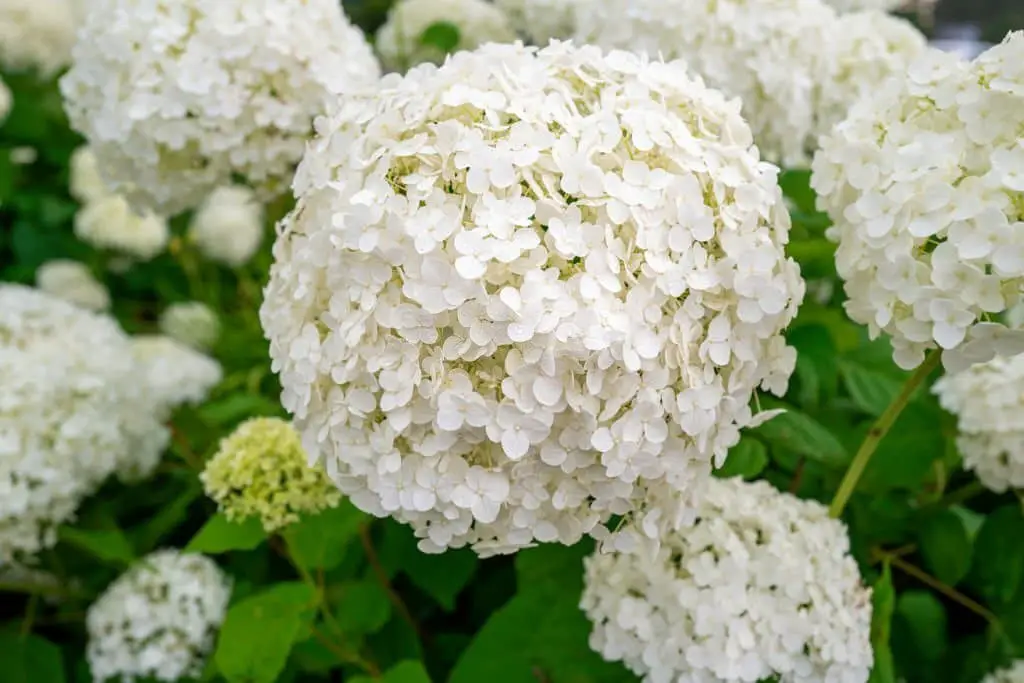
Native to North America and select regions of Europe, Viburnum shares a familial connection with hydrangea. Interestingly, various species within the Viburnum family can bear a striking resemblance to peonies. The shrub’s flowers typically unfold in shades of white or pink, accompanied by a pleasant, sweet fragrance. Blooming periods typically occur late spring or early summer, rendering Viburnum an attractive addition to any garden layout.
Zinnias.
While peonies may be stunning, the zinnia flower offers an equally impressive display of color without sacrificing uniqueness. Boasting a palette that spans from crisp whites and sunny yellows to vibrant pinks, fiery reds, rich purples, and radiant oranges, this versatile bloom can be found in a multitude of hues, including bi-color and tri-color varieties.
What’s more, zinnias are remarkably easy to cultivate and maintain, making them an ideal choice for gardeners of all skill levels – from novices to seasoned pros – looking to add a pop of color to their outdoor spaces.
Ranunculus vs. peony.
While both ranunculus and peonies are stunning flowers suitable for cutting, their unique characteristics set them apart. Notably, ranunculus boast a more robust appearance due to their greater number of petals compared to peonies. Furthermore, the larger blooms of peonies make them a showstopper in any arrangement. Additionally, ranunculus offer a broader color palette than peonies, making them an excellent choice for those seeking variety.
On the other hand, peonies possess a longer vase life than ranunculus, allowing their beauty to be enjoyed for a longer period. Ultimately, the decision between these two lovely flowers depends on personal preference and the desired aesthetic.
Are peonies and hydrangeas the same?
While some flowers may share similarities with peonies, they are ultimately distinct species. Peonies, belonging to the genus Paeonia, boast large, showy blossoms in a range of colors, whereas hydrangeas, classified under the genus Hydrangea, feature smaller blooms typically in white or blue hues. Although both can enhance any garden’s beauty, they possess unique characteristics that set them apart. Ultimately, it’s essential to recognize and appreciate each flower’s individual charm.
Related Posts
When it comes to flower delivery, do you tip your courier? The age-old question of gratuities can be confusing. However, understanding the normative practices and expectations around tipping your floral deliverer is crucial. In the world of perennials, identifying weeds with yellow flowers is a common challenge. These pesky intruders can choke out precious plants, making it essential to know how to remove them effectively.
For those looking to add some color to their gardens or containers, colorful perennials for partial shade are the way to go. From African violets to astilbe, there’s a world of options waiting to be explored. But what about growing these perennials? The answer lies in understanding how to care for them. Whether you’re seeking tips on soil quality or sunlight requirements, finding the right balance is key.
In terms of cold climate gardening, having the right shade perennials can make all the difference. With a little planning and knowledge, your shaded areas can be transformed into lush oases.


